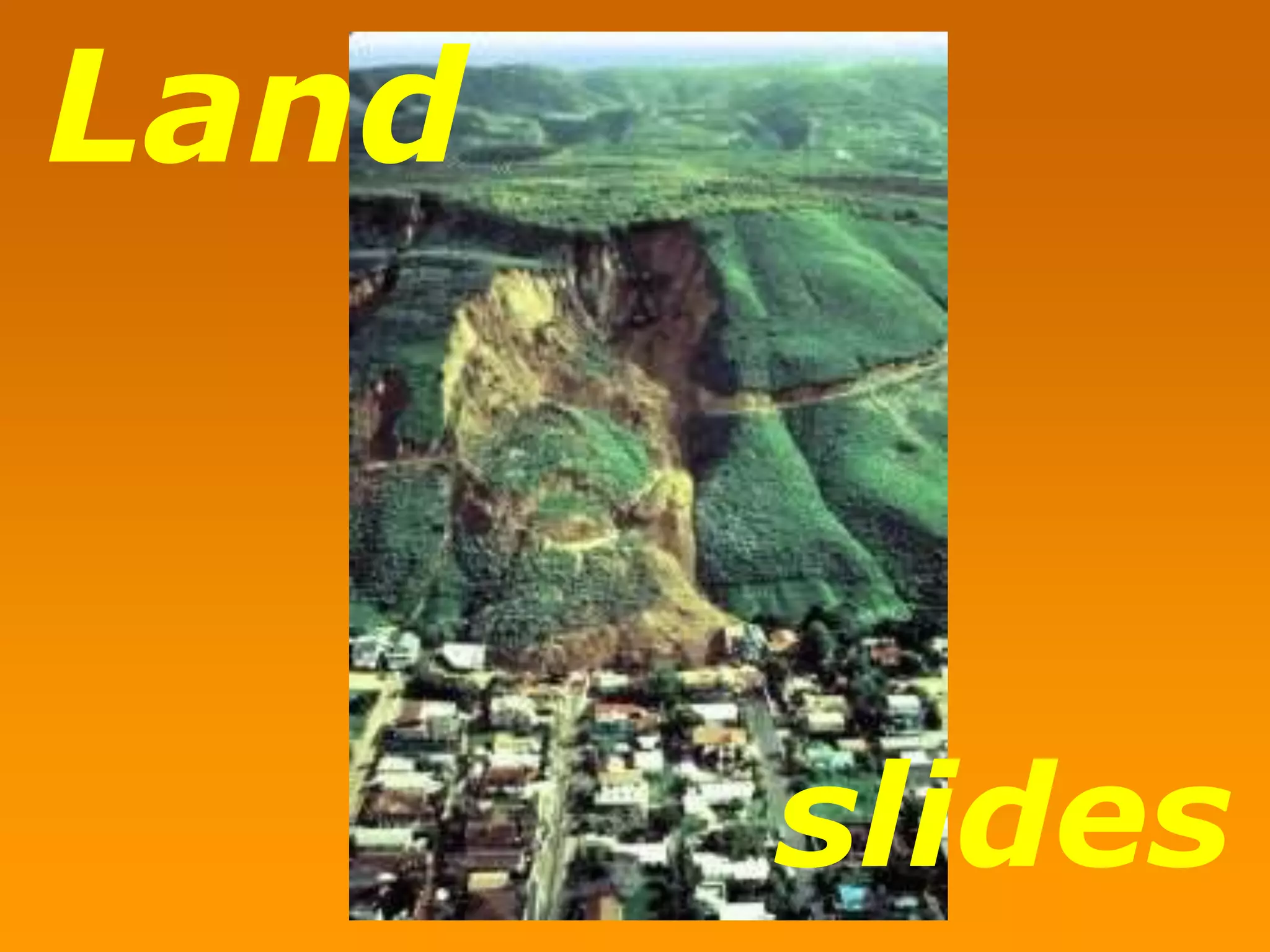Landslides refer to the downward movement of land masses along steep slopes under the influence of gravity. They are classified based on speed and type of movement. Slow movements include solifluction, creep, and soil creep. Rapid movements include debris slides, rock slides, and rock falls. Landslides are caused by both internal factors like slope angle, groundwater, lithology, and geological structures, as well as external factors like earthquakes. Preventive measures include controlling slope angles, installing drainage systems, reinforcing weak zones, and controlling deforestation.
















